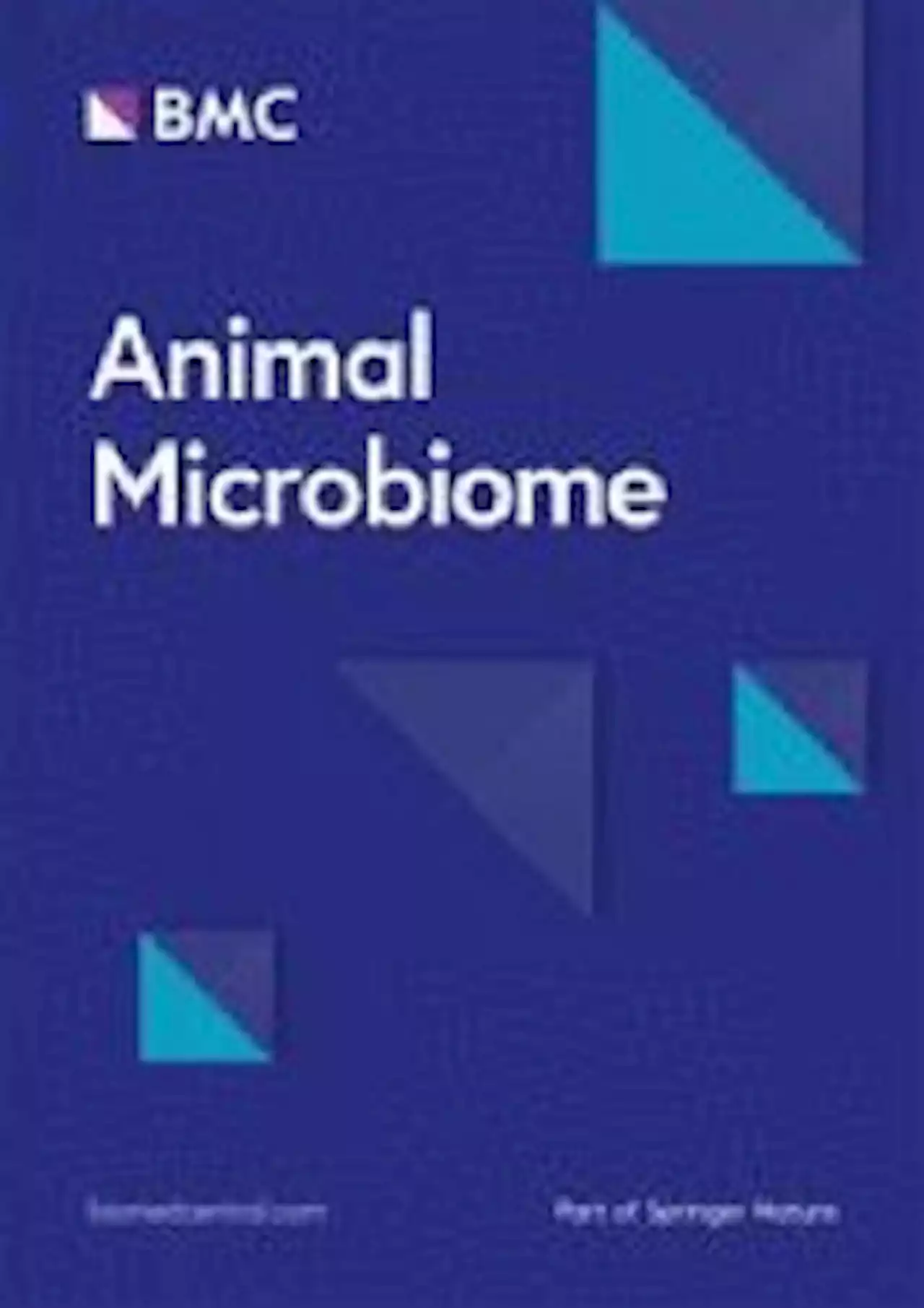How does quinoa affect the gut microbiome of men? Microbiome Cardiometabolic Diabetes Digestion Fermentation Gastrointestinal Glucose Obesity Protein Type2Diabetes MensHealth Nutrients_MDPI UniofNewcastle
Study: Impact of Daily Consumption of Whole-Grain Quinoa-Enriched Bread on Gut Microbiome in Males. Image Credit: Subbotina Anna / Shutterstock
In the last decade, due to advancements in technological, molecular, and computational methods, the gut microbiome has attracted much attention. Previous studies using the aforementioned advancements have revealed the existence of a complex symbiotic relationship between gut microbes and hosts. The gut microbiome assists in the host's digestion, absorption, and fermentation of dietary fiber and other food components.
As a part of the experimental design, the treatment group participants were given one quinoa-enriched bread roll per day, whereas the control group, or those subjected to placebo treatment, received a bread roll containing no quinoa. In addition, although participants were recommended typical diets, they were asked not to consume any whole-grain foods during the study period.
The BMI, blood pressure, and fasting blood glucose of all participants remained unchanged during the study period. The quinoa bread and control bread contained 6.52 g/100 g and 3.60 g/100 g of dietary fiber, respectively. The control and treatment groups observed a non-significant increase of firmicutes, by around 7.5% and 4.4%, respectively. Similarly, a non-significant reduction in the bacteroidetes level was observed between the two groups. An increase in Fusicatenibacter and Subdoligranulum was found in the control group. In contrast, changes in genera Anaerostipes and Dorea were observed in the quinoa bread-consuming group. However, none of these changes were statistically significant.
Danmark Seneste Nyt, Danmark Overskrifter
Similar News:Du kan også læse nyheder, der ligner denne, som vi har indsamlet fra andre nyhedskilder.
 Vaginal microbiome-host interactions modeled in a human vagina-on-a-chip - MicrobiomeBackground A dominance of non-iners Lactobacillus species in the vaginal microbiome is optimal and strongly associated with gynecological and obstetric health, while the presence of diverse obligate or facultative anaerobic bacteria and a paucity in Lactobacillus species, similar to communities found in bacterial vaginosis (BV), is considered non-optimal and associated with adverse health outcomes. Various therapeutic strategies are being explored to modulate the composition of the vaginal microbiome; however, there is no human model that faithfully reproduces the vaginal epithelial microenvironment for preclinical validation of potential therapeutics or testing hypotheses about vaginal epithelium-microbiome interactions. Results Here, we describe an organ-on-a-chip (organ chip) microfluidic culture model of the human vaginal mucosa (vagina chip) that is lined by hormone-sensitive, primary vaginal epithelium interfaced with underlying stromal fibroblasts, which sustains a low physiological oxygen concentration in the epithelial lumen. We show that the Vagina Chip can be used to assess colonization by optimal L. crispatus consortia as well as non-optimal Gardnerella vaginalis-containing consortia, and to measure associated host innate immune responses. Co-culture and growth of the L. crispatus consortia on-chip was accompanied by maintenance of epithelial cell viability, accumulation of D- and L-lactic acid, maintenance of a physiologically relevant low pH, and down regulation of proinflammatory cytokines. In contrast, co-culture of G. vaginalis-containing consortia in the vagina chip resulted in epithelial cell injury, a rise in pH, and upregulation of proinflammatory cytokines. Conclusion This study demonstrates the potential of applying human organ chip technology to create a preclinical model of the human vaginal mucosa that can be used to better understand interactions between the vaginal microbiome and host tissues, as well as to evaluate the safety and efficac
Vaginal microbiome-host interactions modeled in a human vagina-on-a-chip - MicrobiomeBackground A dominance of non-iners Lactobacillus species in the vaginal microbiome is optimal and strongly associated with gynecological and obstetric health, while the presence of diverse obligate or facultative anaerobic bacteria and a paucity in Lactobacillus species, similar to communities found in bacterial vaginosis (BV), is considered non-optimal and associated with adverse health outcomes. Various therapeutic strategies are being explored to modulate the composition of the vaginal microbiome; however, there is no human model that faithfully reproduces the vaginal epithelial microenvironment for preclinical validation of potential therapeutics or testing hypotheses about vaginal epithelium-microbiome interactions. Results Here, we describe an organ-on-a-chip (organ chip) microfluidic culture model of the human vaginal mucosa (vagina chip) that is lined by hormone-sensitive, primary vaginal epithelium interfaced with underlying stromal fibroblasts, which sustains a low physiological oxygen concentration in the epithelial lumen. We show that the Vagina Chip can be used to assess colonization by optimal L. crispatus consortia as well as non-optimal Gardnerella vaginalis-containing consortia, and to measure associated host innate immune responses. Co-culture and growth of the L. crispatus consortia on-chip was accompanied by maintenance of epithelial cell viability, accumulation of D- and L-lactic acid, maintenance of a physiologically relevant low pH, and down regulation of proinflammatory cytokines. In contrast, co-culture of G. vaginalis-containing consortia in the vagina chip resulted in epithelial cell injury, a rise in pH, and upregulation of proinflammatory cytokines. Conclusion This study demonstrates the potential of applying human organ chip technology to create a preclinical model of the human vaginal mucosa that can be used to better understand interactions between the vaginal microbiome and host tissues, as well as to evaluate the safety and efficac
Læs mere »
 Investigating the impact of database choice on the accuracy of metagenomic read classification for the rumen microbiome - Animal MicrobiomeMicrobiome analysis is quickly moving towards high-throughput methods such as metagenomic sequencing. Accurate taxonomic classification of metagenomic data relies on reference sequence databases, and their associated taxonomy. However, for understudied environments such as the rumen microbiome many sequences will be derived from novel or uncultured microbes that are not present in reference databases. As a result, taxonomic classification of metagenomic data from understudied environments may be inaccurate. To assess the accuracy of taxonomic read classification, this study classified metagenomic data that had been simulated from cultured rumen microbial genomes from the Hungate collection. To assess the impact of reference databases on the accuracy of taxonomic classification, the data was classified with Kraken 2 using several reference databases. We found that the choice and composition of reference database significantly impacted on taxonomic classification results, and accuracy. In particular, NCBI RefSeq proved to be a poor choice of database. Our results indicate that inaccurate read classification is likely to be a significant problem, affecting all studies that use insufficient reference databases. We observed that adding cultured reference genomes from the rumen to the reference database greatly improved classification rate and accuracy. We also demonstrated that metagenome-assembled genomes (MAGs) have the potential to further enhance classification accuracy by representing uncultivated microbes, sequences of which would otherwise be unclassified or incorrectly classified. However, classification accuracy was strongly dependent on the taxonomic labels assigned to these MAGs. We therefore highlight the importance of accurate reference taxonomic information and suggest that, with formal taxonomic lineages, MAGs have the potential to improve classification rate and accuracy, particularly in environments such as the rumen that are understudied or contain many
Investigating the impact of database choice on the accuracy of metagenomic read classification for the rumen microbiome - Animal MicrobiomeMicrobiome analysis is quickly moving towards high-throughput methods such as metagenomic sequencing. Accurate taxonomic classification of metagenomic data relies on reference sequence databases, and their associated taxonomy. However, for understudied environments such as the rumen microbiome many sequences will be derived from novel or uncultured microbes that are not present in reference databases. As a result, taxonomic classification of metagenomic data from understudied environments may be inaccurate. To assess the accuracy of taxonomic read classification, this study classified metagenomic data that had been simulated from cultured rumen microbial genomes from the Hungate collection. To assess the impact of reference databases on the accuracy of taxonomic classification, the data was classified with Kraken 2 using several reference databases. We found that the choice and composition of reference database significantly impacted on taxonomic classification results, and accuracy. In particular, NCBI RefSeq proved to be a poor choice of database. Our results indicate that inaccurate read classification is likely to be a significant problem, affecting all studies that use insufficient reference databases. We observed that adding cultured reference genomes from the rumen to the reference database greatly improved classification rate and accuracy. We also demonstrated that metagenome-assembled genomes (MAGs) have the potential to further enhance classification accuracy by representing uncultivated microbes, sequences of which would otherwise be unclassified or incorrectly classified. However, classification accuracy was strongly dependent on the taxonomic labels assigned to these MAGs. We therefore highlight the importance of accurate reference taxonomic information and suggest that, with formal taxonomic lineages, MAGs have the potential to improve classification rate and accuracy, particularly in environments such as the rumen that are understudied or contain many
Læs mere »
 I paid £75 for whole Christmas dinnner at Cheshire's 'poshest' farm shopI paid £75 for whole Christmas dinner at Cheshire's 'poshest' farm shop loved by Molly-Mae... but was it worth it?
I paid £75 for whole Christmas dinnner at Cheshire's 'poshest' farm shopI paid £75 for whole Christmas dinner at Cheshire's 'poshest' farm shop loved by Molly-Mae... but was it worth it?
Læs mere »
 The new Pokémon Scarlet and Violet region does something unprecedentedA whole new world we live in
The new Pokémon Scarlet and Violet region does something unprecedentedA whole new world we live in
Læs mere »
 Alterations of the fecal microbiota in relation to acute COVID-19 infection and recovery - Molecular BiomedicinePeople with acute COVID-19 due to SARS-CoV-2 infection experience a range of symptoms, but major factors contributing to severe clinical outcomes remain to be understood. Emerging evidence suggests associations between the gut microbiome and the severity and progression of COVID-19. To better understand the host-microbiota interactions in acute COVID-19, we characterized the intestinal microbiome of patients with active SARS-CoV-2 infection in comparison to recovered patients and uninfected healthy controls. We performed 16S rRNA sequencing of stool samples collected between May 2020 and January 2021 from 20 COVID-19-positive patients, 20 COVID-19-recovered subjects and 20 healthy controls. COVID-19-positive patients had altered microbiome community characteristics compared to the recovered and control subjects, as assessed by both α- and β-diversity differences. In COVID-19-positive patients, we observed depletion of Bacteroidaceae, Ruminococcaceae, and Lachnospiraceae, as well as decreased relative abundances of the genera Faecalibacterium, Adlercreutzia, and the Eubacterium brachy group. The enrichment of Prevotellaceae with COVID-19 infection continued after viral clearance; antibiotic use induced further gut microbiota perturbations in COVID-19-positive patients. In conclusion, we present evidence that acute COVID-19 induces gut microbiota dysbiosis with depletion of particular populations of commensal bacteria, a phenomenon heightened by antibiotic exposure, but the general effects do not persist post-recovery.
Alterations of the fecal microbiota in relation to acute COVID-19 infection and recovery - Molecular BiomedicinePeople with acute COVID-19 due to SARS-CoV-2 infection experience a range of symptoms, but major factors contributing to severe clinical outcomes remain to be understood. Emerging evidence suggests associations between the gut microbiome and the severity and progression of COVID-19. To better understand the host-microbiota interactions in acute COVID-19, we characterized the intestinal microbiome of patients with active SARS-CoV-2 infection in comparison to recovered patients and uninfected healthy controls. We performed 16S rRNA sequencing of stool samples collected between May 2020 and January 2021 from 20 COVID-19-positive patients, 20 COVID-19-recovered subjects and 20 healthy controls. COVID-19-positive patients had altered microbiome community characteristics compared to the recovered and control subjects, as assessed by both α- and β-diversity differences. In COVID-19-positive patients, we observed depletion of Bacteroidaceae, Ruminococcaceae, and Lachnospiraceae, as well as decreased relative abundances of the genera Faecalibacterium, Adlercreutzia, and the Eubacterium brachy group. The enrichment of Prevotellaceae with COVID-19 infection continued after viral clearance; antibiotic use induced further gut microbiota perturbations in COVID-19-positive patients. In conclusion, we present evidence that acute COVID-19 induces gut microbiota dysbiosis with depletion of particular populations of commensal bacteria, a phenomenon heightened by antibiotic exposure, but the general effects do not persist post-recovery.
Læs mere »
